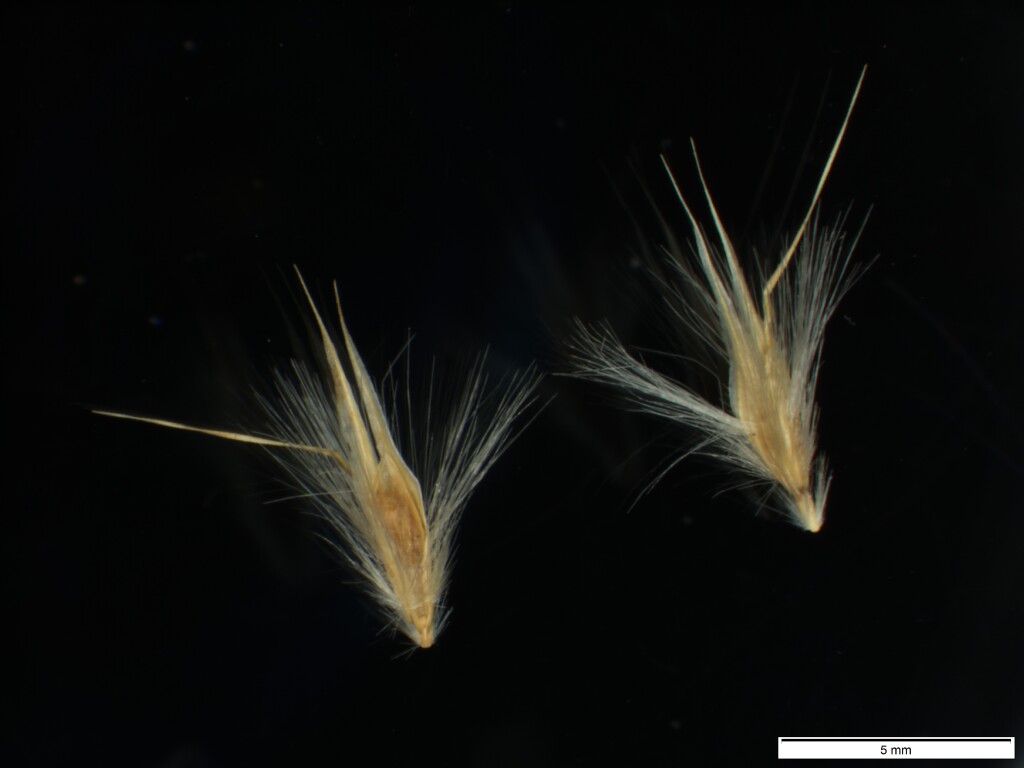Rytidosperma tenuius
(Steud.) A.Hansen & SundingLoosely tufted perennial. Culms to 1 m high. Leaves glabrous to moderately hairy; blade flat or folded, to 25 cm long and 4 mm wide. Panicle typically linear to narrow-lanceolate, sometimes interrupted, but commonly contracted and ovate to lanceolate in high-altitude forms, 3–15 cm long. Spikelets purplish (particularly on margins of glumes) at least when young, 4–6-flowered; glumes subequal, acute, 10–18 mm long; lemma 2.5–4 mm long, firm, shining, with 2 rows of hairs, frequently with a few scattered hairs between the rows, the lower row 1–1.5 mm above the callus tuft, and reaching the upper row, the hairs of which normally exceed the twisted part of the central awn; lateral lobes erect or slightly spreading, 5–10 mm long, slender and evenly tapered, the setiform part to 4 mm, but often almost lacking; central awn exceeding lateral lobes by 2–5 mm; palea obovate, oblanceolate or narrowly elliptic, exceeding sinus by 0.5–1 mm. Flowers Sep.–Feb.
LoM, MuM, Wim, VVP, VRiv, MuF, GipP, OtP, WaP, Gold, CVU, GGr, DunT, NIS, EGL, EGU, WPro, HSF, HNF, Strz, MonT, VAlp. Also SA, Qld, NSW, ACT, Tas. Occurs most commonly in cool, often damp sites occasionally found in drier forests (e.g. Chiltern).
Formerly including Rytidosperma oreophilum. Rytidosperma tenuius may be confused with R. bipartitum and R. fulvum, but those species normally inhabit dry forests, woodlands and grasslands and have abundant silky hairs between the upper and lower series, and a thinly membranous palea which is narrowly tapered near the apex and exceeds the sinus of the lemma by more than 1 mm.
Walsh, N.G. (1994). Poaceae. In: Walsh, N.G.; Entwisle, T.J., Flora of Victoria Vol. 2, Ferns and Allied Plants, Conifers and Monocotyledons, pp. 356–627. Inkata Press, Melbourne.
 Spinning
Spinning


